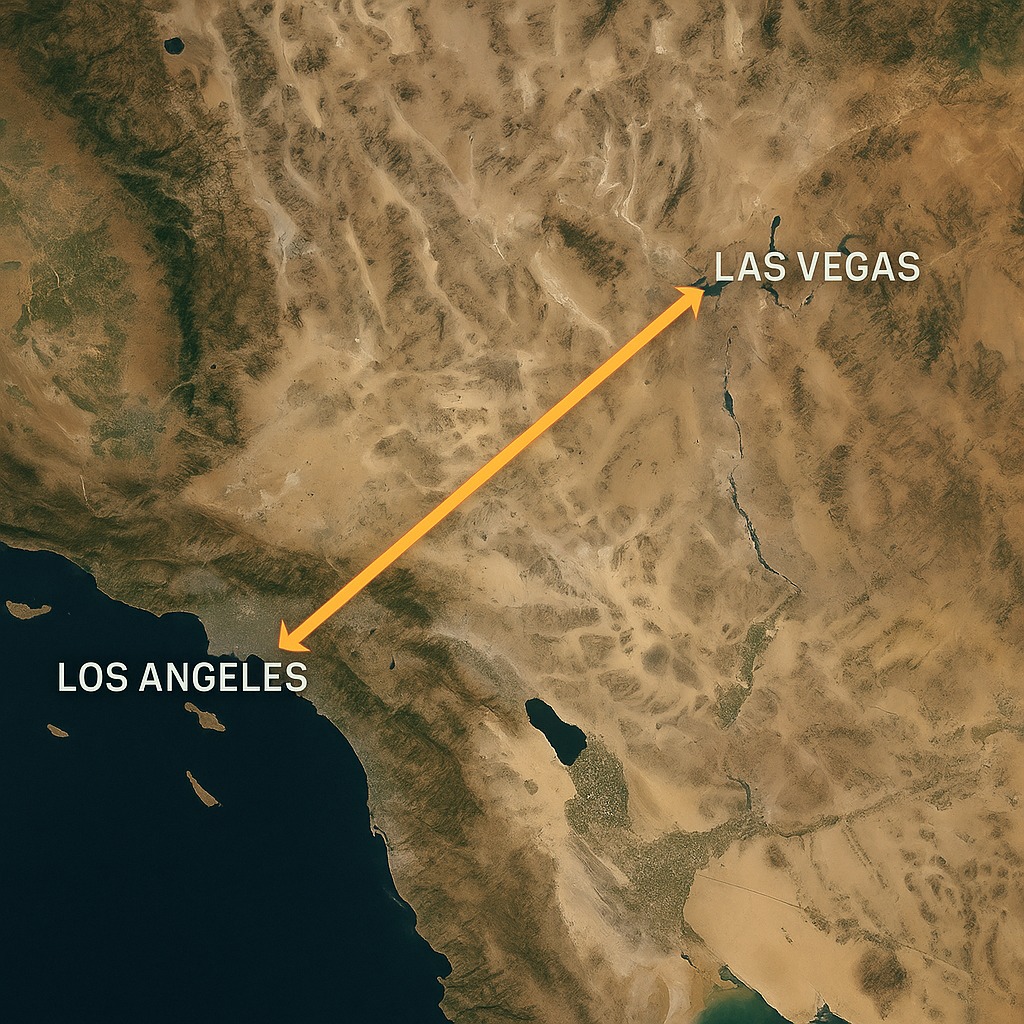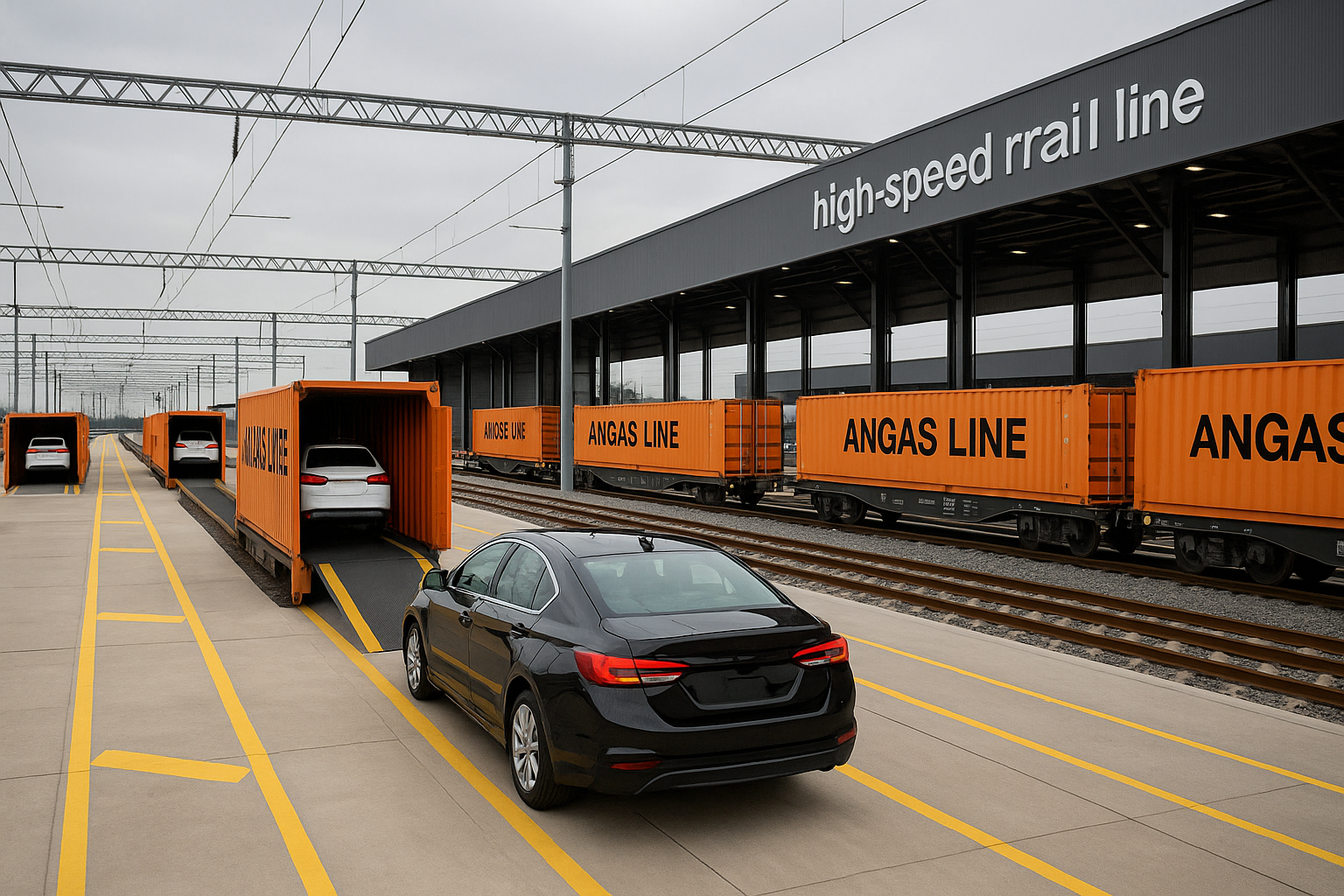
The ANGAS Line is a visionary high-speed rail project designed to connect Los Angeles and Las Vegas with a cutting-edge transport solution. The name "ANGAS" fuses "ANG" from Los Angeles and "GAS" from Las Vegas — evoking speed, utility, and cross-state integration. Rather than a traditional train or freeway, the ANGAS Line proposes a revolutionary vehicle transport system using smart containers and automated rail infrastructure.
The line runs directly between greater Los Angeles and Las Vegas, avoiding congested urban cores by branching at both ends into a Y-shaped fork. On the LA side, the line splits 30 miles out — one branch extending toward the northern Valley region and another toward Orange County. On the Vegas side, the line serves both North Las Vegas and South Vegas, including areas near major development zones in the northwest and southeast. This Y-split model increases regional accessibility without compromising speed.

Travelers drive their vehicles into modified containers at regional ANGAS Ports. Each vehicle is positioned by robotic lifts, and passengers are seated in the rear cabin area — a space designed with seating, lighting, and optionally, refreshments. Each container is then routed onto high-speed rail tracks capable of 200–250 mph. No traffic, no pit stops — just smooth, uninterrupted travel. This isn't just about commuting — it's about a completely new mode of mobile comfort.
The ANGAS Line isn't limited to human travel. It's also a freight rail corridor. Delivery trucks and commercial shippers load entire trailers or containers onto the line to rapidly cross the desert corridor. With 24/7 scheduling, the line can operate high-volume freight transfers during off-peak passenger hours. Amazon, UPS, and FedEx could reduce long-haul traffic dramatically while maintaining tight schedules and lowering fuel costs.
Each entry point functions more like a spaceport than a train station. Vehicles line up in queues, are scanned and secured, and then autonomously loaded into smart containers. The design includes secure zones, departure ramps, maintenance bays, and a full back-end logistics system. Passengers can remain in their private pods or step into shared lounge cabins for the ride. The process takes just minutes from arrival to full-speed departure.

Despite its elegance and technical feasibility, the ANGAS Line project has been officially abandoned. The vision was bold — but the regulatory hurdles, astronomical cost, and opposition from entrenched industries made it untenable. It remains a concept. A dream. A great American "what-if."